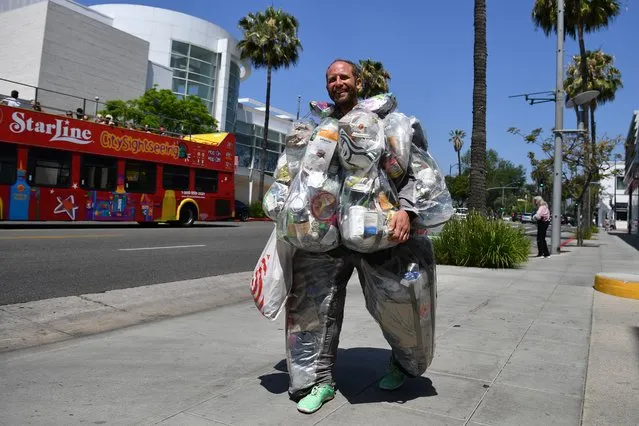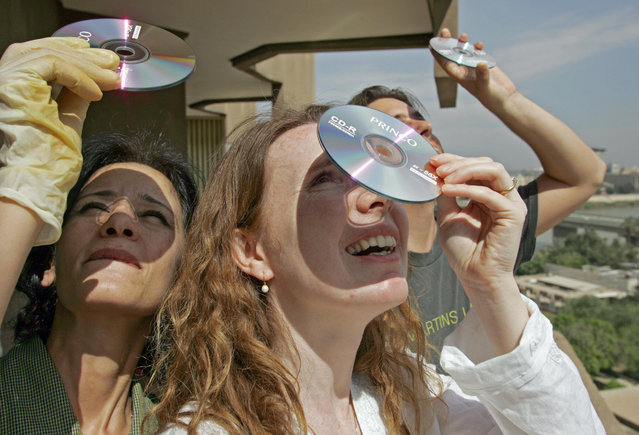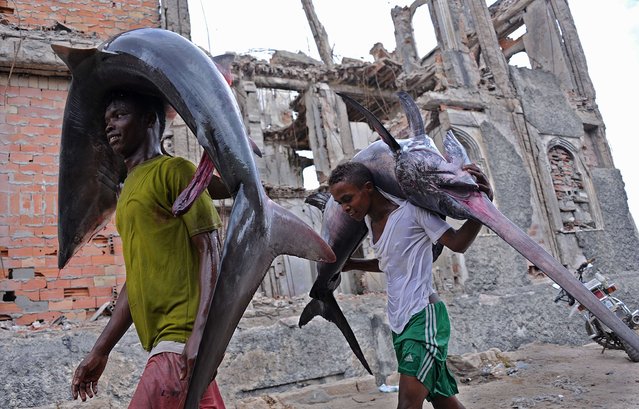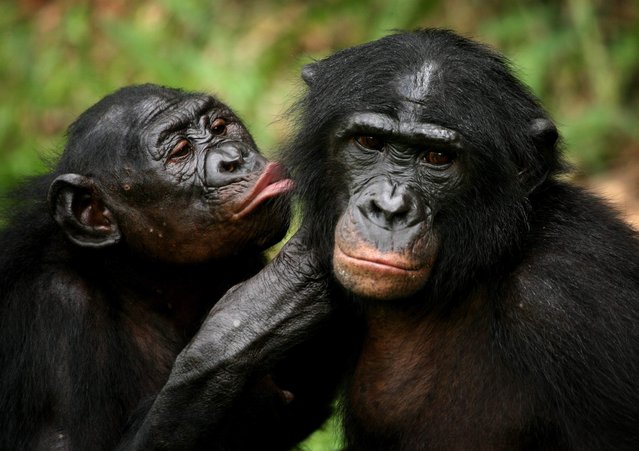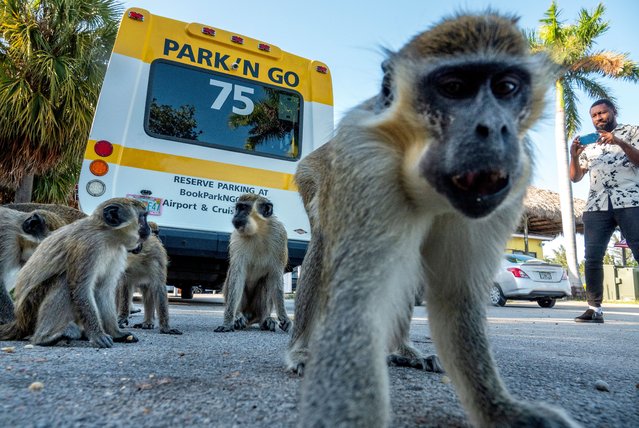
A person takes photos of Vervet monkeys that are eating in a parking lot near the Fort Lauderdale-Hollywood International Airport in Dania Beach, Florida, USA, 10 May 2022. Over 40 descendants of smallish vervets, escaped from now closed breeding facility, are living within 1,500 acres around the Fort Lauderdale-Hollywood International airport. The Dania Beach Vervet Project is an organization established in 2016 with the purpose of promote the conservation, and education about the local free ranging vervet monkeys in Dania Beach, Florida. (Photo by Cristóbal Herrera/EPA/EFE)
17 May 2022 05:54:00,post received
0 comments

